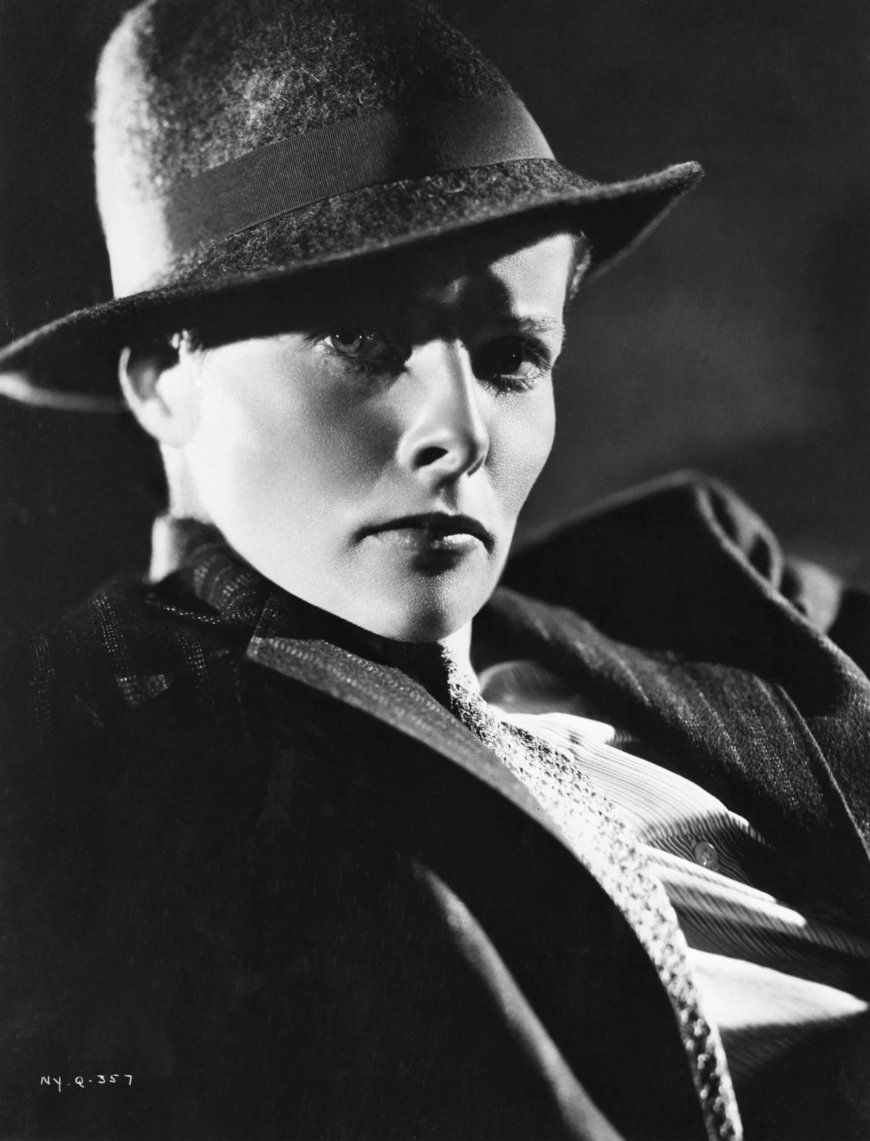These recently unearthed photos of Katharine Hepburn tell a very trans story
We’ve discussed the transness of actor, icon, and all-around GOAT Katharine Hepburn before, but it’s never a bad time to revisit the subject, especially since Hepburn’s gender-f*ckery is a matter of public record.


We’ve discussed the transness of actor, icon, and all-around GOAT Katharine Hepburn before, but it’s never a bad time to revisit the subject, especially since Hepburn’s gender-f*ckery is a matter of public record.
Growing up, Hepburn went by the nickname “Jimmy,” wore her brothers’ clothes, and generally rebelled against the cookie-cutter gender standards of her time. Something even more remarkable about Hepburn is that she was one of the few actresses to bring this gender fluidity to her stage and screen roles as well. In the early 30s, Hepburn worked with the lesbian director Dorothy Arzner on the aviation drama Christopher Strong, where Heburn served her best Amelia Earhart and got to channel her inner David Bowie in a series of truly insane outfits.
How about we take this to the next level?
Subscribe to our newsletter for a refreshing cocktail (or mocktail) of LGBTQ+ entertainment and pop culture, served up with a side of eye-candy.
Subscribe to our Newsletter today
Later that decade, Hepburn starred in the crossdressing caper Sylvia Scarlett, where she played with the theme of gender identity in an even more shocking way.
The early 30s were a time when films, in a pre-code era, could afford to be more playful and daring with gender expression, and no one took better advantage of this than the “tomboyish” Hepburn.
But one of her most interesting (and ballsy) choices of roles happened not on screen, but on stage, in the 1932 play “The Warrior’s Husband.” We sadly don’t have any footage of this performance, since Hepburn was replaced by Elissa Landi for the 1933 film adaptation. But what we do have are these incredible images that tell their own story.
In Julian F. Thompson’s play, we get a glimpse into the lives of the Amazons, the female warriors who famously did just fine without the patriarchy. In Thompson’s reimagining, the Amazonian kingdom is a place of total role reversal: the women go out and hunt, while men are left at home to care for the children. “What’s a husband?” One Amazon asks another early on, only to be told: “A husband is what you call a man you can’t get rid of.”
But complications arise when the beautiful, strong-willed Antiope falls in love with an effeminate Greek man.
Any story about the Amazons—and the Greeks, for that matter—is bound to have quite a lot of queerness within it, but queer people were especially drawn to “The Warrior’s Husband” in all its many iterations. On stage with Hepburn as her love interest—and reprising his role onscreen—was David Manners as the effeminate, beautiful Theseus, who tops from the bottom and eventually wins Antiope’s heart. Manners, a gay man, also appeared in early horror classics like Dracula and The Mummy, lived with his playwright partner Frederic William Mercer for 30 years, until the latter’s death in 1998. He was the perfect choice to play opposite Hepburn in a comedy that poked fun at traditional gender roles decades before it was cool.
Later on, “The Warrior’s Husband” was adapted into the 1942 musical “By Jupiter,” where the gender-bending love story took on new dimensions. Writing the score was the songwriting team of Rodgers and Hart, and Lorenz Hart, a gay man, relished the chance to breathe new life into the extremely queer story of effeminate men and masculine women. Hart, whose life would be cut tragically short by alcoholism by the late 40s, relished writing songs for this gender-weird world in which men were the wives and women got to do the hunting, playing, and screwing. One song he wrote, “The Boy I Left Behind Me,” is marvelously modern: sung by an Amazon saddened by having to go to war and leave behiind her sock-darning husband, the lyrics read:
“Oh how I miss the boy I left behind me,
I miss my gentle, sentimental little mate,
I’ll never need the socks he knitted to remind me
That he is waiting for me at the garden gate.”
You can see why gay people were drawn to this story—it illustrated a world that was seen by straight people as crazy and comic, but to queer people probably seemed astoundingly modern and exciting. It’s no wonder that Hepburn’s take on Antiope caught the attention of the movies. Shortly after appearing in the play, Hepburn signed with Fox Studios, and the rest is history.
Related
The best LGBTQ+ movies & TV shows coming to streaming August 2025
Goth girl anti-heroes, Slaysian excellence, and the awards show to end all awards choice all hit streaming platforms this month.
Sign up for the Queerty newsletter to stay on top of the hottest stories in LGBTQ+ entertainment, politics, and culture.

 Mark
Mark 





